Acoustic sensors enable efficient and non-invasive monitoring of a wide range of species, including many that are difficult to monitor in other ways. Although they were initially limited in application scope largely due to cost and hardware constraints, the development of low-cost, open-source models like the Audiomoth in recent years has increased access immensely and opened up new avenues of research. For example, some teams are using them to identify illicit human activities through the detection of associated sounds, like gunshots, vehicles, or chainsaws (e.g. OpenEars).
With this relatively novel dimension of wildlife monitoring rapidly advancing in both marine and terrestrial systems, it is crucial that we identify and share information about the utility and constraints of these sensors to inform efforts. A recent study identified advancements in hardware and machine learning applications, as well as early development of acoustic biodiversity indicators, as factors facilitating progress in the field. In terms of limitations, the authors highlight insufficient reference sound libraries, a lack of open-source audio processing tools, and a need for standardization of survey and analysis protocols. They also stress the importance of collaboration in moving forward, which is precisely what this group will aim to facilitate.
If you're new to acoustic monitoring and want to get up to speed on the basics, check out these beginner's resources and conversations from across the WILDLABS platform:
Three Resources for Beginners:
- Listening to Nature: The Emerging Field of Bioacoustics, Adam Welz
- Ecoacoustics and Biodiversity Monitoring, RSEC Journal
- Monitoring Ecosystems through Sound: The Present and Future of Passive Acoustics, Ella Browning and Rory Gibb
Three Forum Threads for Beginners:
- AudioMoth user guide | Tessa Rhinehart
- Audiomoth and Natterjack Monitoring (UK) | Stuart Newson
- Help with analysing bat recordings from Audiomoth | Carlos Abrahams
Three Tutorials for Beginners:
- "How do I perform automated recordings of bird assemblages?" | Carlos Abrahams, Tech Tutors
- "How do I scale up acoustic surveys with Audiomoths and automated processing?" | Tessa Rhinehart, Tech Tutors
- Acoustic Monitoring | David Watson, Ruby Lee, Andy Hill, and Dimitri Ponirakis, Virtual Meetups
Want to know more about acoustic monitoring and learn from experts in the WILDLABS community? Jump into the discussion in our Acoustic Monitoring group!
Header image: Carly Batist
No showcases have been added to this group yet.
- @luciana.rocha
- | She/her
- 0 Resources
- 0 Discussions
- 3 Groups
- @Meagan
- | she/her
Supporting wildlife monitoring in remote Pacific Islands
- 0 Resources
- 1 Discussions
- 3 Groups
- @julianagc
- | she/her
With a background in biology, consulting, and education, I enjoy combining my many passions in applying ML and AI to biodiversity conservation.

- 1 Resources
- 0 Discussions
- 6 Groups
- @Tiago_Andre_Marques
- | he/him
University of St Andrews
TAM got his PhD in Statistics in 2007 and is currently a Senior Research Fellow working in CREEM at the University of St Andrews, interested in estimating animal abundance with a focus on passive acoustic density estimation. He holds an invited professor position at the Universid
- 0 Resources
- 1 Discussions
- 1 Groups
Terrestrial Ecologist
- 0 Resources
- 1 Discussions
- 4 Groups
I am the executive director of FishEye Collaborative, a non-profit developing underwater bioacoustic technologies and methods to grow our understanding of marine ecosystems.
- 0 Resources
- 0 Discussions
- 6 Groups
- 0 Resources
- 0 Discussions
- 6 Groups
- 0 Resources
- 0 Discussions
- 1 Groups
EcoFirst
Biologist and naturalist involved in NGO's activities as well as profesionnally
- 0 Resources
- 1 Discussions
- 3 Groups
- 0 Resources
- 5 Discussions
- 8 Groups
- @mdorigo
- | she/her
- 0 Resources
- 0 Discussions
- 3 Groups
- @stefan_istrate
- | he/him
Machine Learning Researcher & Nature Photographer. Building conservation tech for biodiversity monitoring at Wildlife Insights.


- 0 Resources
- 5 Discussions
- 9 Groups
Read about the advice provided by AI specialists in AI Conservation Office Hours 2025 earlier this year and reflect on how this helped projects so far.
6 August 2025
If you're a Post-Doctoral Fellow, a PhD student, or a member of the research staff interested in applying your computational skills to support active research publications, please read on to learn about the Cross-...
5 August 2025
A group of Montreal labs is searching for a postdoctoral researcher for a project applying machine learning to the spatial scaling of biodiversity.
28 July 2025
The Marine Innovation Lab for Leading-edge Oceanography develops hardware and software to expand the ocean observing network and for the sustainable management of natural resources. For Fall 2026, we are actively...
24 July 2025
Still unfunded, we are looking for a lab office, materials, used instruments and to create our educational basement.
17 July 2025
Join us in curating an annotated acoustic dataset for India! We are accepting strong and weak labels, read the FAQ document (linked below) for more info and sign the Data Agreement form to join
17 July 2025
Conservation technologies have a critical role in supporting biodiversity surveys at scale. Acoustic sensors have been increasingly adopted in ecological research, enabling us to expand our capacities in assessing...
15 June 2025
HawkEars is a deep learning model designed specifically to recognize the calls of 328 Canadian bird species and 13 amphibians.
13 May 2025
The Biological Recording Company's ecoTECH YouTube playlist has a focus on webinars about Bioacoustic monitoring.
29 April 2025
This paper includes, in its supplementary materials, a helpful table comparing several acoustic recorders used in terrestrial environments, along with associated audio and metadata information.
15 April 2025
Conservation International is proud to announce the launch of the Nature Tech for Biodiversity Sector Map, developed in partnership with the Nature Tech Collective!
1 April 2025
PhD position available at the University of Konstanz in the Active Sensing Collective Group!
28 March 2025
September 2025
event
October 2025
November 2025
event
September 2024
event
event
64 Products
Recently updated products
| Description | Activity | Replies | Groups | Updated |
|---|---|---|---|---|
| Super interesting work! Maybe one day you will also be able to have a career as a science fiction writer. Lot of interesting outcomes can come of this. ❤️ |
|
Acoustics, Data Management & Mobilisation, Early Career | 9 months ago | |
| It's still a bit early days. For nocturnal flight calls (which are the majority of the mysteries) the recordings are generally of poor quality and the model doesn't find anything... |
|
Acoustics | 9 months ago | |
| I think lithium AAs would be ideal, but since it's not likely to be super cold I think you could get away with Alkaline if you're ok with somewhat reduced runtimes. |
|
Acoustics | 9 months 1 week ago | |
| Hi WILDLABSWe have been working on a macOS version of PAMGuard and it would be great if some folk here in the community would like to give... |
|
Acoustics, Software Development | 9 months 1 week ago | |
| The figures come very close to the primo mic. When I looked into this a couple of years ago I don’t recall seeing one come this close. |
|
Acoustics | 9 months 1 week ago | |
| This is a thread for anyone who has questions about AI for Conservation Office Hours 2025.We're once again teaming up with Dan Morris from... |
|
Acoustics, AI for Conservation, Camera Traps, Community Base, Geospatial | 9 months 2 weeks ago | |
| Okay, super! Really nice thread you started. It’s great to get these insights.With my own experiments, as you mentioned, accuracy is very good within the polygons. But in addition... |
|
Acoustics | 9 months 2 weeks ago | |
| The PCB mount terminals are actually quite robust and paired with a lock washer and something that would better secure the nylon (e.g., a piece of flat grooved plastic to add... |
|
Acoustics, Conservation Dogs, Sensors | 9 months 3 weeks ago | |
| I guess, you know USB digital audio | Android Open Source Project. from which I conclude it should be possible, however, my Android experience is also zero. |
|
Acoustics | 9 months 3 weeks ago | |
| PCBs back, working great but right now a custom firmware build ("force_27"), need to make sure all is well with the standard build. This of course a non-switch version. |
|
Acoustics | 10 months ago | |
| Hi Brett, I am interested in developing really low cost multi channel underwater acoustic recorders. Can you tell me a bit more about the board and stuff you were using... |
|
Build Your Own Data Logger Community, Acoustics, Camera Traps, Climate Change, East Africa Community, Marine Conservation, Open Source Solutions, Protected Area Management Tools | 10 months 1 week ago | |
| These would be infrasound, so no the sealed volume doesn't need to be buried. It only needs to be a few cc total volume for a single element. I found an old poster... |
+12
|
Acoustics | 10 months 2 weeks ago |
Bioacoustics Stack Exchange has reached the public beta stage!
28 July 2022 3:14pm
Looking for specialists in eco-acoustics (Alp region) for Documentary
18 July 2022 5:17pm
Earth Species Project - Senior AI Research Scientist
15 July 2022 6:40pm
CIEEM 2022 Summer Conference
12 July 2022 12:33am
Renaming files with incorrect timestamps
28 June 2022 2:12am
5 July 2022 4:03pm
Just posting the link to the Bioacoustics Stack Exchange post where I asked this as well, some other people gave code as well (though I haven't had time to try it as it has been a holiday weekend here in the US).
8 July 2022 10:40pm
I don't know if this was resolved, but if you copy this code into a python file in the same folder as your .wav files and then run it, it should rename everything. Try testing it on a copy first in case something is off! This assumes that all devices are named "swift1" and all .wav files are in the same folder.
---------------------------------------------------------------------------------------------
#Reset timestamps for passive acoustic recorders
import os
from datetime import datetime,timedelta
from time import strftime
#Set Path to where you placed this file - Should be placed in folder with all recordings
os.chdir(os.path.dirname(os.path.abspath(__file__)))
#Start Date YYYY-MONTH-DAY and Time HR:MIN:SEC
start_date = "2022-06-17"
start_time= "T09:30:00"
curr_time = start_date+start_time
time = datetime.fromisoformat(curr_time)
incby = timedelta(minutes=20)
#For all .wav files in folder, set name to updated YYYYMMDD_HHMMSS and the increment by 20 minutes.
for file in os.listdir():
tnameform = "swift1_"+time.strftime("%Y%m%d_%H%M%S.wav")
if file[-4:] == ".wav":
os.rename(file,tnameform)
time = time + incby
Bioacoustics Stack Exchange Beta is live & we need your help!
6 July 2022 3:13pm
Bioacoustic Stack Exchange
26 August 2020 12:09pm
28 August 2020 11:55am
I'm not a bioacoustics person but StackExchange has taught me more than half of what I know about GIS as a professional. I still regularly use and recommend it to people wanting to improve their skills at any level. Perhaps there needs to be more awareness raising amongst the bioacoustics community (as you are doing here!) about just how useful it can be, to build up the critical mass. Sadly I don't have 200 points to throw behind this, but I'll look out for anyone who does and might be tempted. Good luck!
7 May 2021 2:02pm
Were you ever able to get a Bioacoustics StackExchange off the ground? An annual retry? :)
5 July 2022 3:21pm
Hi just bringing this thread back up to attention: the bioacoustics stackexchange is now up and running in beta form, and could use as much participation as possible to ensure its establishment as a community. bioacoustics.stackexchange.com
If anyone is interested in getting in and can't get an invite, please feel free to DM me and I'll pass one along.
1.5 TB micro SD
28 June 2022 9:10am
28 June 2022 11:33pm
If only I didn't work in rainforests where canopies preclude solar panels.... *sigh* lol
29 June 2022 5:28am
Went down a rabbit hole reading the battery threads on here. It strikes me that gravity batteries might be a good solution in rainforests. String a line over the highest branch you can and then raise as much weight as you can. I'm unfamiliar with the power requirements of camera traps / audiomoths but I might do some napkin calcs if i'm bored this week. @carlybatist
29 June 2022 6:06am
Hmm 20kg raised 5m would only buy you less than half an AA battery assuming 100% efficiency. Lame, so much for that idea.
New Conservation Tech Directory update
27 June 2022 4:45pm
Acoustic multilateration for gibbons
22 June 2022 11:49am
23 June 2022 2:03pm
Awesome stuff!! Interested in what kind of recorders you are using and how are you sync'ing them for the TDOA?
New papers on passive acoustic monitoring
21 June 2022 9:44pm
Sensor availability in the PRC
14 April 2022 1:16am
3 June 2022 11:38pm
Hi David,
I can build him one per requirements. I'm getting started on the solar powered variant. If your scholar is in the Beijing area, I can put him in touch with a colleague who does this sort of work.
4 June 2022 4:01am
Hi Harold--
That's awesome news! Can you shoot me an email at savage13@purdue.edu and I'll try to put you in touch.
21 June 2022 6:08am
Jamie's tip piqued my curiosity, so I bought what I thought might be what Jamie was talking about. It is an SK-001 as detailed here (not my video) for SGD4 or thereabouts. The price alone boggles the mind, though there are some characteristics that should be borne in mind if used for conservation work.
Foremost is the use of MP3 rather than raw uncompressed WAV which make comparing this data with existing recordings challenging. Second, an electret condenser mic is used, so manual calibration of recordings may be required (MEMS mics OTOH have stricter characteristics that are documented). Third, it is unknown what kind of AGC or signal companding is used (this is in addition to data compression). Since the device is advertised as a voice recorder, the presence of AGC/companding/noise gate features would not be surprising. Also, I could not get it to work with a 64G micro SD card, but 32G was ok.
The SK-001 device could be useful for presence/absence type of PAM. For other work, more testing would be needed to see if this device would be suitable.
Once again, I'm referring only to the SK-001 that I bought that I thought Jamie might be referring to. These comments may not apply to other low cost recorders.
Careers in Bioacoustics
9 June 2022 5:13pm
20 June 2022 6:02pm
Hi Eric,
Dropping in a reply we had over on Linkedin here. Annoyingly I can't do a snazzy embed of the comment - will fix that!
I guess it depends on whether you want to stay in academia or go into industry. Overtime working hours are preprogrammed in academia without appropriate compensation. Austrian funding agencies pay a reasonable wage. I believe it could be improved.
I've always enjoyed working with exotic animals like elephants, giraffes, and giant pandas, as well as the collaborative and international work. This experience shaped me into the person I am today, and I don't want to missany of it. Personally, I believe that bioacoustics has not received the respect that it deserves, including the bioacousticians who put their lives into their projects. I am convinced that bioacoustics can be a valuable tool in conservation. Throughout my career, non-academics and the tech industry have approached me numerous times about using bioacoustics as a conservation monitoring tool. And I frequently feel stepped on when asked to provide material without appreciating the work behind the data, especially when it comes from economically-driven institutes that are unwilling to compensate. The fact is that the best conservation Technology is meaningless without solid basic data.
In retrospective, a more tech-oriented educational background would have been good!
Steph
Bird Acoustic Solution
9 June 2022 11:31pm
11 June 2022 1:16pm
There are a bunch of different options for detecting calls in audio data, from proper statistical platforms such as R/Python, to bespoke software such as Arbimon, Kaleidoscope & Raven. Edge Impulse also an online ML model-building interface, but this is more focused on then deploying the models onto devices for edge computing. Arbimon has template matching features that are a good way to start finding detections to build a training dataset, I have used it for this in the past. Arbimon is online & free. Kaleidoscope has a clustering function which is again a good first step to start picking out the low-hanging fruit of detections so to speak. It's a desktop app, but this is not free ($400/yr). Raven also has some automated features - template & band-limited entropy detectors. It's also a desktop app and not free ($100-$800 depending on 1-year or permanent license and whether non-profit or not; not sure where a government agency would fit into that).
There is always the ubiquitous split between biologists who traditionally are taught to use R and tech/computer folks who are taught to use Python, but for ML, Python's ecosystem is really well set up. Not sure what the level of programming you/your dept has, but there are a TON of free resources online for learning it if you were interested.
Relevant Python bioacoustics packages potentially of use - Acoustic_Indices, scikit-maad, Ketos, OpenSoundscape (as well as the obvious ML ones such as TensorFlow)
Some R packages as well - soundecology, bioacoustics, monitoR, warbleR, gibbonR
@tessa_rhinehart has created a fabulous list of bioacoustics software that you can find here: https://github.com/rhine3/bioacoustics-software.
You can also turn to articles that have already done similar things and reach out to the authors to discuss their methods. I've got a (totally un-exhaustive) list of papers on passive acoustic monitoring, with a section on 'analyses' that you might find useful to start with; I can email it to you if you'd like. Working on a PAM training materials page on my website that it will be available at shortly as well (will post the link to Wildlabs when it's live!).
Hope this is helpful!
16 June 2022 9:27am
Hi,
Look at this publication (below) and download the BirdNet app. The computer code is provided to train ML algorithm that will allow you to tailor the model with your own data.
Thanks, Mrigesh
20 June 2022 1:00am
Thank you @carlybatist , @Freaklabs and @MK . The inputs are very useful and I am progressing on my project based on that. Appreciate a lot.
Hiring Acoustic Ecology Postdoctoral Fellow
16 June 2022 4:02pm
Multiple Roles with Rainforest Connection
16 June 2022 9:15am
Passive acoustic training workshop video/materials
13 June 2022 4:03pm
New papers on marine acoustic monitoring
11 June 2022 2:36pm
Ocean Tracking Network - Telemetry Data Study Hall
8 June 2022 6:48pm
Audio Data Across Domains (AudioXD) Workshop
7 June 2022 3:48pm
New microprocessor for low power AI camera & audio applications from Microchip
3 June 2022 8:36pm
New article (Reuters): Orca stuck in river to be lured to sea using drone with loudspeakers
1 June 2022 4:02pm
UKAN+ Monitoring UK Biodiversity Symposium 15-16th June
31 May 2022 2:58pm
New papers on passive acoustic monitoring
29 May 2022 7:24pm
1 June 2022 3:00pm
4 June 2022 3:09pm
New paper: Animal soundscapes reveal key markers of Amazon forest degradation from fire and logging
29 May 2022 12:43pm
Microphone for bird monitoring on Raspberry Pi
21 August 2019 5:45pm
26 August 2019 1:51pm
I can understand the reluctance to go down the I2c route on linux, but I bought some Adafruit MEMs mics (https://www.adafruit.com/product/3421) and they work fine.
If you want to dip a toe in the water, are not too cost concious, but want something you just plug in and it (largely) pretty much works, then I'd recommend looking at the seeed respeaker. Its an array, and is probably overkill for what you want. It does come with quite a bit of hand holding though, I got a "4 mic linear". Connect some jumper wires, screw on a board, install some software (!). OK for a POC (proof of concept) and as a sanity check.
Going back to the Adafruits mems breakouts, I have them wired back to the pi by re-using old CAT5 network cable, so the pi can be in one place and the mics somewhat remote - eg round the other side of a tree? I configured a lot of software to get this working as I wanted, but it essentially removes "white noise", does file compression etc.
9 May 2022 4:04pm
apologies - ignore this reply (or if someone can delete it please do!) I have forum blindness and thought this thread was also about using Birdnet but I realise it isn't.... I suspect this is a setting on Birdnet-Pi so will post on their forums...
Hi Paul, have been trying to get a i2c mic working with Birdnet but am having challenges in getting it working. I can install the adafruit mems you mention above and getting it working directly but when I try to use it through Birdnet I am failing. Have done some rebooting, testing, search forums but am drawing a blank - did yours work "out the box"?
27 May 2022 3:42pm
Hi Julien,
I use this mic for my raspberry pi setup and it works well picking up bird species singing in our garden while the mic and raspberry sit under our roof tiles.
Greetings,
Robin
iGOKU USB Mikrofon, Omnidirektionaler Kondensator Lavalier Clip On Mic für Computer, Laptop, Mac, Podcast, Interviews, MSN, PS4, Netzwerksingen, Skype, Audio Video Recording: Amazon.de: Computer & Zubehör
iGOKU USB Mikrofon, Omnidirektionaler Kondensator Lavalier Clip On Mic für Computer, Laptop, Mac, Podcast, Interviews, MSN, PS4, Netzwerksingen, Skype, Audio Video Recording: Amazon.de: Computer & Zubehör
Passive Acoustic Monitoring - Malagasy Training Workshop
9 May 2022 4:10pm
Help with AudioMoth configuration for bat recording
17 February 2022 1:31pm
11 March 2022 2:11pm
Koen,
Hi - the config for the audiomoth looks fine (you could put a high-pass filter on to cover frequencies 12-96 kHz only). The scheduler is not set (you have 0 files per day), but presume this is just the screenshot.
The issue you have, though, is to do with your loudspeaker - presuming it is just a standard one. Standard music/computer speakers are tuned to human range of hearing and don't emit sound above around 20 kHz. They won't emit ultrasound to 100 kHz. For that you need specialised equipment. If you want to generate some ultrasound yourself though, just rub your fingers together, or jangle some keys near the Audiomoth!
Hope that's of some use, Carlos
Apply now: Women in Conservation Technology Programme, Kenya
8 March 2022 12:00am




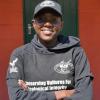







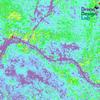























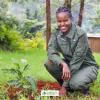

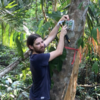







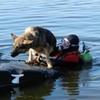




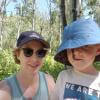







4 July 2022 2:39pm
Hi Carly,
has your issue been resolved yet? Could you link the stackoverflow question maybe? Otherwise this seems like a few lines of python code may solve this. I could assist with this if required.
R is usually not the obvious choice for file level operations :)